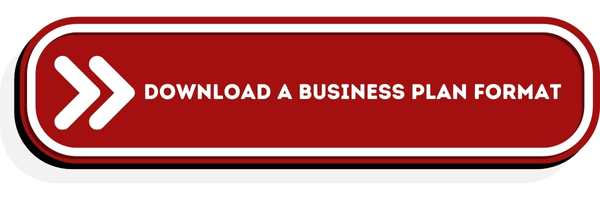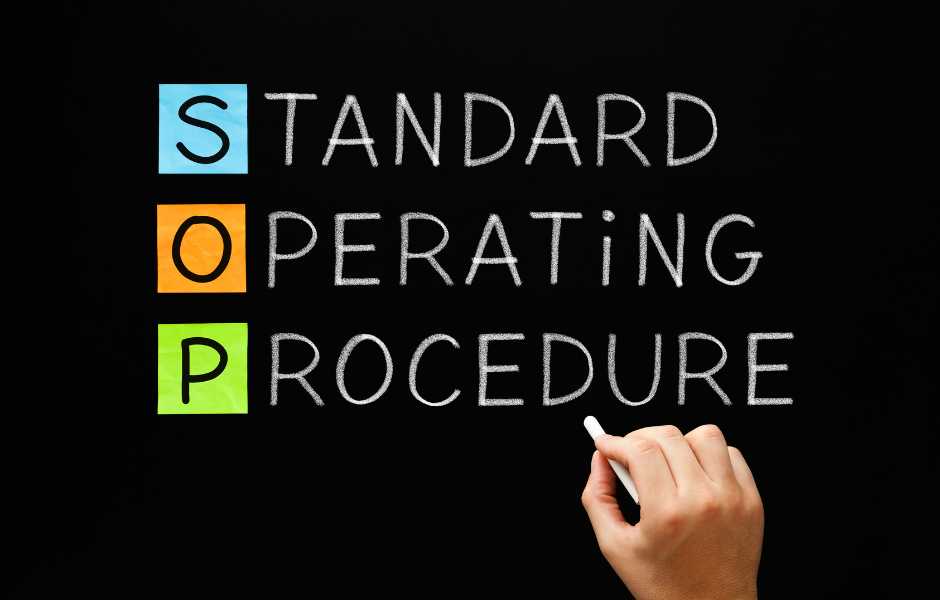
Creating a business plan in entrepreneurship can help you achieve long-term success. This startup business plan outline will help you get there.
In the fast-paced and ever-changing environment of the business world, achieving success is not merely dependent on a stroke of good luck. It is necessary to have a well-thought-out road map that directs a company toward the accomplishment of its goals and aims.
This business road map, more commonly referred to as a business plan, functions as the basis upon which long-term success is constructed. In the Complete Business Plan Course, you’ll learn everything you need to make a great business plan, from an award-winning business school professor, VC, and successful entrepreneur.
An efficient business plan is not just a document; rather, it is a strategic tool that outlines a company’s mission, vision, and goals, as well as the actionable steps that are required to achieve them.
By scripting a business plan outline of your dream business you can send a focused and positive message to the universe activating the law of attraction for business success.
Contents
The Importance of Having a Business Plan in Entrepreneurship
Embarking on your entrepreneurial journey is like setting sail on a thrilling adventure. Picture this: The vast sea of opportunities awaits, but before you can start reaping the treasures, you must chart your course with precision.
Your very first quest in this adventure is to discover fresh, innovative business ideas or breathe new life into existing concepts. These are the seeds of income, the sparks of opportunity that will fuel your online enterprise.
Enter the startup business plan – your compass, your roadmap, your ticket to success, whether your venture takes root in the digital realm or thrives in the physical world. In the realm of business, it’s not just about making money; it’s about envisioning the future and meticulously planning every step to get there.
So, before the coins start pouring in like a waterfall, you’ve got to get your thoughts in order and put pen to paper to craft a business plan that’s as brilliant as your vision. New venture planning is the very lifeblood of your enterprise.
Crafting a strategic business plan for new businesses is akin to summoning a genie that can grant your wishes – especially when it comes to securing that essential funding to fuel your dreams. Picture it as the golden key that unlocks the doors of opportunity.
Whether your business concept is a revolutionary new idea or a fresh twist on a tried-and-true concept, the common thread binding them is the need for a stellar business plan. Think of it as the architect’s blueprint, the foundation upon which your entrepreneurial aspirations are built.
After you write a well-thought-out startup business plan, you can launch your new business with much more confidence and prevent costly mistakes that you might make in operating an online business.
10 Steps To Create A Startup Business Plan in Entrepreneurship
In this article, we outline the business plan structure you need to follow in creating a business plan that paves the way for long-term success for your startup.
#1. Achieve Clarity of Vision & Mission
A vision and mission statement that is unmistakable and compelling should serve as the foundation of every profitable business plan. Crafting a compelling company vision and mission statement is a crucial first step for any entrepreneur in defining the purpose, direction, and values of their business.
These statements serve as the foundation upon which the entire business strategy is built and act as the guiding principles that inspire and align all of the activities that are conducted by the business. When formulating these statements, ensure that they’re specific, realistic, and reflective of the values held by the company.
Here’s a step-by-step guide to start creating an effective entrepreneur vision and mission statement for your company:
- Understand the Difference
Before diving into the creation process, it’s important to understand the distinction between the vision and mission statements of companies.
Vision Statement:
An entrepreneur vision statement describes the future you aspire to create through your business. It’s a vivid and inspirational description of where you envision your company in the long term, often spanning 5 to 10 years.
A company’s long-term goals and aspirations should be outlined in a statement called its vision statement. It should explain where the company wants to be in the future.
Mission Statement:
A mission statement outlines the objectives of the company as well as the means by which it intends to accomplish those objectives. It should also reflect the core values that guide your business decisions.
This statement outlines the fundamental purpose of your business and why it exists and encapsulates the value you provide to customers, stakeholders, and society.
Click here to get the Ultimate Founders Checklist
- Self-Reflection and Brainstorming
Begin by reflecting on the purpose of your business. Ask yourself questions such as:
- What problem does my business solve?
- What value does my product or service bring to customers?
- What impact do I want to make on the industry or society?
- What are the core values that will guide my business decisions?
Jot down your thoughts and ideas during this brainstorming phase. Encourage creativity and think big. Don’t worry about perfect wording at this stage; focus on capturing the essence of your business’s purpose and direction.
- Define Core Values
Your core values are the principles and beliefs that guide your business’s behavior and decision-making. Consider the values that you want your business to embody and that resonate with your target audience.
These values will not only shape your mission statement but will also influence the culture of your company.
- Craft Your Vision Statement
Take your brainstorming notes and start writing your business vision statement. Keep these tips in mind:
-
- Be Inspirational: Your vision statement should inspire and motivate both your team and your customers. It should paint a picture of a future that’s exciting and worth striving for.
- Be Clear and Concise: Keep your vision statement succinct. A sentence or two is usually sufficient to convey your vision effectively.
- Use Power Words: Use powerful and positive statements that capture the essence of your aspirations.
- Avoid Jargon: Avoid industry jargon or technical terms that might be unclear to those outside your field.
Check out some of the best vision statement examples from famous and successful organizations to inspire and spark your creativity.
- Develop the Mission Statement
Now, turn your attention to crafting the mission statement. Here’s how:
- Address the “Why”: Your mission statement should answer the question of why your business exists. Focus on the value you provide to your customers and the broader impact you want to make.
- Incorporate Core Values: Infuse your core values into the mission statement. These values reflect your business’s ethics and culture.
- Be Specific: While your vision statement is more future-oriented, your mission statement should be specific about the actions your business takes to achieve its purpose.
- Consider Your Target Audience: Think about who your primary stakeholders are—customers, employees, investors, etc. Your mission statement should resonate with them.
Click here to get the Ultimate Founders Checklist
- Seek Feedback
Once you’ve drafted your company vision and mission statements, seek feedback from trusted individuals. This could include mentors, advisors, or even potential customers. Feedback can provide valuable insights and help refine your statements.
- Refine and Finalize
Use the feedback you receive to refine and finalize your vision and mission statements. Ensure that they accurately represent your business’s essence and resonate with your target audience.
- Communicate and Integrate
Once your organization’s vision and mission statements are complete, share them widely. Employees, partners, and stakeholders should all be made aware of them to maximize consistency and comprehension. Adopt these tenets as part of your company’s ethos, decision-making, and public statements.
Keep in mind that your organization’s stated goals and objectives are not written in stone. It’s possible you’ll need to revisit and revise them as your company develops and matures to ensure they still reflect your core values and priorities.
In the end, crafting an entrepreneur vision and mission statement is an introspective exercise that determines the course of your entrepreneurial endeavors and shapes the character of your company.
#2. Conduct a Market Analysis
To achieve success in the long run, you absolutely need to have an in-depth knowledge of the market. This requires conducting in-depth research into the business sector, the audience you intend to target, the competition, and the trends in the market.
A company can strategically position itself and tailor its offerings to effectively meet the needs of its customers if it first identifies any gaps in the market, any trends that may emerge, and any potential opportunities.
Not only does conducting a market analysis that is well-informed help with decision-making, but it also demonstrates to potential investors that the company is aware of the shifting dynamics of the market.
Conducting a thorough market analysis is a critical step in developing a comprehensive business plan. It provides valuable insights into the industry landscape, target audience, competition, and overall market trends.
Here’s a step-by-step guide on how an entrepreneur can effectively conduct a market analysis for their business plan:
- Define Your Industry
Begin by clearly defining the industry or industries your business operates in. Identify the key sectors, sub-segments, and niches relevant to your products or services.
- Gather Industry Data
Collect relevant data about your chosen industry. This could include market reports, industry publications, trade associations, and government sources. Look for information on market size, growth rate, trends, and major players.
- Identify Target Audience
Define your target audience—the specific group of people who are most likely to be interested in and benefit from your offerings. Consider demographics (age, gender, location), psychographics (values, interests, behaviors), and buying behavior (needs, preferences, buying frequency).
- Analyze Customer Needs and Pain Points
Understand the needs and pain points of your target audience. What problems are they trying to solve? How does your product or service address those issues? This information will help you position your offerings effectively.
- Evaluate Competitors
Identify your direct and indirect competitors. Study their strengths, weaknesses, market share, pricing strategies, and unique selling propositions (USPs). This analysis will help you differentiate your business and offerings.
- Analyze Market Trends
Research current and future trends in your industry. This could include technological advancements, shifts in consumer behavior, regulatory changes, and emerging market segments. Understanding trends can help you stay ahead of the curve.
- Determine Market Entry Barriers
Identify any barriers to entry that might affect your business. These could be high startup costs, regulatory hurdles, strong competition, or proprietary technologies held by established players.
- Conduct SWOT Analysis
Perform a SWOT analysis to assess your business’s strengths, weaknesses, opportunities, and threats. This analysis helps you understand your internal capabilities and external challenges.
- Collect Primary Data
Primary data involves information collected directly from your target audience or stakeholders. This can be done through surveys, interviews, focus groups, or online polls. Primary data provides real-time insights and can be particularly valuable for understanding customer preferences.
- Analyze Pricing Strategies
Study the pricing strategies of your competitors and evaluate their pricing models. Consider factors like value perception, cost structure, and pricing elasticity to determine an appropriate pricing strategy for your own products or services.
Click here to get the Ultimate Founders Checklist
- Project Market Demand
Estimate the potential demand for your offerings in the market. This involves analyzing historical data, growth rates, and the impact of trends on future demand.
- Validate Assumptions
Throughout your market analysis, it’s essential to validate your assumptions and findings. Seek feedback from industry experts, potential customers, and advisors to ensure the accuracy of your conclusions.
- Summarize Findings
Compile all the data and insights you’ve gathered into a clear and concise summary. This summary should provide a comprehensive understanding of the industry, target audience, competition, trends, and opportunities.
- Integrate Analysis into Business Plan
Incorporate the findings from your market analysis into the relevant sections of your business plan. This includes sections like the executive summary, market analysis section, marketing strategy, and financial projections.
- Stay Updated
Remember that market conditions are not static. Stay informed about changes in the industry landscape, customer preferences, and competitive dynamics. Regularly update your market analysis to ensure your business plan remains relevant and aligned with the evolving market trends.
A well-conducted market analysis not only provides valuable insights for your business plan but also demonstrates to potential investors and stakeholders that you have a deep understanding of the market and a strategic approach to your business’s growth.
#3. Outline Your Strategic Goals & Objectives
Outlining strategic goals and objectives is a crucial aspect of creating a comprehensive and effective business plan. Goals point us in a certain direction, and objectives lay out the specific actions that must be taken to reach those goals.
Goals provide a clear direction for your business and serve as the foundation for your operational plans and decision-making. On the other hand, objectives transform these overarching goals into manageable and measurable chunks of work that can be done to bring them closer to fruition.
The business plan acts as a compass that directs the efforts of the company toward its long-term success by outlining a road map that includes specific milestones. Here’s a step-by-step guide on how to outline strategic goals and objectives for your business plan:
- Start with the Vision and Mission
Ensure that your strategic goals and objectives align with the overarching vision and mission of your business. Your goals should be in pursuit of your long-term aspirations and purpose.
- Define Specific Goals
Identify the specific outcomes you aim to achieve. Each goal should be clear, measurable, and well-defined. Avoid vague or ambiguous language. For example, a vague goal would be “increase sales,” while a specific goal would be “achieve a 20% increase in sales revenue within the next fiscal year.”
- Use the SMART Framework
The most successful business plans outline distinct, measurable, and attainable strategic objectives that are in line with the overall mission and vision of the company. These objectives ought to be SMART, which stands for specific, measurable, attainable, relevant, and time-bound.
Here’s how to apply the SMART criteria to your goals:
- Specific: Clearly state what you want to achieve.
- Measurable: Set metrics or indicators that allow you to track progress and measure success.
- Achievable: Ensure that the goal is realistic and attainable given your resources and constraints.
- Relevant: Align the goal with your business’s overall strategy and priorities.
- Time-Bound: Set a deadline or timeframe by which the goal should be achieved.
- Categorize Goals
Categorize your goals based on different aspects of your business, such as financial, operational, marketing, and organizational goals. This makes it easier to track progress in various areas.
- Establish Long-Term and Short-Term Goals
Differentiate between long-term and short-term goals. Long-term goals outline the larger achievements you want to realize over several years, while short-term goals focus on immediate objectives to be achieved within the next 12 to 18 months.
- Prioritize Goals
Determine the relative importance of each goal. Not all goals are equally critical to your business’s success. Prioritization helps you allocate resources and efforts effectively.
- Link Objectives to Goals
Once you have your strategic goals in place, break them down into specific objectives. Objectives are the actionable steps you need to take to achieve your goals. Each objective should contribute directly to the accomplishment of a particular goal.
- Make Objectives Actionable
Ensure that your objectives are actionable and not overly broad. Each objective should begin with a verb that describes a clear action, such as “launch,” “develop,” “increase,” or “expand.”
- Define Key Performance Indicators (KPIs)
For each objective, identify the key performance indicators (KPIs) that will help you track progress and measure success. KPIs provide quantifiable data that demonstrate whether you’re on track to achieve your objectives.
Click here to get the Ultimate Founders Checklist
- Ensure Alignment
Ensure that your objectives are aligned both vertically and horizontally within your organization. Vertical alignment means they tie back to higher-level goals, while horizontal alignment ensures different departments or teams are working cohesively toward common goals.
- Communicate and Involve Stakeholders
Share your outlined strategic goals and objectives with relevant stakeholders, including employees, partners, and investors. Get their input and buy-in to foster a sense of ownership and collaboration.
- Review and Update
Regularly review and update your strategic goals and objectives to reflect changes in the business environment, market conditions, and internal factors. Flexibility is important to ensure your business remains adaptable and responsive.
- Integrate Goals & Objectives into Your Business Plan
Incorporate your outlined strategic goals and objectives into the relevant sections of your business plan, such as the executive summary, strategic overview, and operational plans.
Remember that your strategic goals and objectives are the roadmap for your business’s growth and success. They guide your actions, shape your strategies, and provide a framework for making informed decisions as you work toward achieving your long-term vision.
#4. Articulate Your Value Proposition
A compelling value proposition is what differentiates one company from another in the same industry. It is the unique value or benefit that customers receive from using the products or services offered by a particular company.
Your target audience should be able to identify with the value proposition, and it should address either their pain points or their desires.
This value proposition should be articulated in an efficient business plan in such a way that it explains to customers why they should select the company rather than one of the other competitors in the market.
Articulating a compelling value proposition is a key element of a business plan, as it defines the unique value your product or service offers to your target audience. A strong value proposition communicates why customers should choose your business over competitors.
Here’s how to effectively articulate a compelling value proposition in your business plan:
- Understand Your Customer’s Needs
Begin by deeply understanding the needs, challenges, and pain points of your target audience. What problems are they trying to solve?
How can your product or service address these issues? The foundation of a strong value proposition lies in addressing your customer’s needs effectively.
- Identify Your Differentiators
Highlight what sets your product or service apart from others in the market. These differentiators could be unique features, superior quality, innovative technology, exceptional customer service, or a combination of factors that make your offering stand out.
- Focus on Benefits, Not Features
While features are important, customers are more interested in the benefits your product or service brings to their lives. How does your offering improve their situation? Highlight the tangible outcomes and positive experiences customers can expect.
- Be Clear and Concise
A compelling value proposition should be clear, concise, and easy to understand. Use simple language that resonates with your target audience. Avoid jargon or technical terms that might confuse or alienate potential customers.
- Communicate Value in a Single Sentence
Summarize your value proposition in a single sentence if possible. This “elevator pitch” should capture the essence of what you offer and why it matters to your customers.
- Address Pain Points
Clearly state how your product or service solves specific pain points or challenges your customers face. Show them that you understand their problems and have a solution that makes their lives better.
- Quantify Benefits When Possible
If you can quantify the benefits your customers will receive, it adds credibility to your value proposition. For example, “Save 50% on energy bills” or “Increase productivity by 30%.”
- Show Social Proof
Mention any endorsements, testimonials, awards, or partnerships that validate your claims and demonstrate that others have benefited from your offering.
- Use Emotion to Connect
Appeal to your customer’s emotions by describing how your product or service can make them feel. Whether it’s saving time, reducing stress, or achieving a personal goal, emotional connections can be powerful motivators.
- Make It Memorable
A memorable value proposition is more likely to stick in customers’ minds. Use catchy phrases, analogies, or metaphors that help your proposition stand out.
- Continuously Test and Refine
Crafting a value proposition is an iterative process. Test your value proposition with potential customers to gather feedback and insights. Refine it based on the feedback you receive to ensure it resonates effectively.
- Integrate Into Your Business Plan
Incorporate your value proposition into your business plan’s executive summary, marketing strategy, and product/service description sections. It should be woven throughout your plan to reinforce the core message of your business.
Remember that your value proposition is a cornerstone of your business’s identity and communication strategy. It should be the driving force behind your marketing efforts and customer engagement, ensuring that your target audience understands the unique value your business brings to the table.
#5. Outline Your Operational Plan
An operational plan is a crucial component of a comprehensive business plan. It outlines how your business will function on a day-to-day basis to achieve the strategic goals and objectives of the business.
It encompasses facets such as production, distribution, marketing, sales, and providing service to customers and provides a comprehensive summary of how the company operates and how each department contributes to the organization as a whole to achieve its goals.
The operational plan ensures that all stakeholders are aligned and aware of their roles in achieving long-term success by highlighting operational strategies and processes. This helps ensure that the plan is successful.
Here’s a step-by-step guide on how an entrepreneur can effectively outline an operational plan to include in their business plan:
- Overview of Operations
Begin your operational plan with a brief overview that explains the core activities of your business. Provide a high-level description of what your business does, the products or services it offers, and its primary functions.
- Organizational Structure
Describe the organizational structure of your business. Detail the hierarchy, roles, and responsibilities of key team members and departments. This provides a clear understanding of how different parts of the business contribute to its overall success.
- Location and Facilities
If applicable, include information about the physical location of your business and the facilities you’ll need to operate. This could include details about office space, manufacturing facilities, warehouses, or retail locations.
- Production and Manufacturing
If your business involves producing goods, outline the production process. Explain how raw materials are sourced, transformed, and turned into finished products. Detail quality control measures and efficiency enhancements.
- Supply Chain Management
Describe how you will manage your supply chain, including sourcing materials, managing suppliers, and ensuring timely delivery of products or components.
- Inventory Management
Explain how you will manage your inventory levels to meet customer demand while minimizing excess stock. Discuss inventory tracking systems, reorder points, and strategies to avoid stockouts.
- Distribution and Delivery
If your business involves distributing products, outline your distribution strategy. This includes the methods you’ll use for shipping, delivery partners, and fulfillment processes.
- Marketing and Sales Operations
Detail how you plan to market and sell your products or services. Describe your sales channels, sales team structure, lead generation strategies, and customer acquisition methods.
- Customer Service and Support
Explain how you will provide excellent customer service and support. Detail your approach to handling customer inquiries, resolving issues, and maintaining positive customer relationships.
- Technology and Systems
Outline the technology and systems you’ll use to support your operations. This includes software, hardware, e-commerce platforms, inventory management systems, and any other tools essential to your business’s functioning.
- Process Improvement and Innovation
Highlight your commitment to continuous improvement and innovation. Describe how you will identify areas for optimization and implement changes to enhance efficiency and effectiveness.
- Regulatory Compliance
If your business is subject to regulations or industry standards, explain how you will ensure compliance. Detail any licenses, permits, or certifications required to operate legally.
- Human Resources
Outline your human resources strategy, including recruitment, training, performance management, and employee development plan. Discuss your approach to fostering a positive and productive work environment.
- Financial Projections and Budget
Integrate your operational plan with your financial projections. Estimate the costs associated with your operational activities and ensure they align with your revenue projections.
- Timeline and Milestones
Provide a timeline for implementing your operational plan. Break it into milestones, indicating when key operational activities will be executed.
- Contingency Plans
Acknowledge potential challenges or risks that could impact your operations. Describe contingency plans and strategies you have in place to address unexpected situations.
- Conclusion
Conclude your operational plan by summarizing its key points and how it supports your business’s overall objectives. Emphasize how effective operations contribute to the success of your business.
By outlining a detailed and well-thought-out operational plan in your business plan, you demonstrate to potential investors, partners, and stakeholders that you have a clear roadmap for executing your business’s strategies and achieving its goals.
#6. Calculate Your Financial Projections
Calculating accurate financial projections is a critical component of a business plan. A financial plan in business plans provides a snapshot of your business’s expected financial performance over a specific period, usually three to five years in the future.
This encompasses the anticipated levels of revenue, expenses, profits, and cash flow. These projections help investors and stakeholders understand the potential profitability and viability of your business.
Your business plan is more likely to be accepted by potential investors and lenders if it includes well-constructed financial projections that demonstrate the practicability and longevity of the business model.
Your company will be able to stay on track and make educated decisions regarding its finances when these projections are reviewed and updated regularly. Here’s a step-by-step guide on how to calculate financial projections for your business plan:
- Revenue Projections
Estimate your future revenue based on sales forecasts. Consider factors such as historical sales data, market research, and expected growth rates. Break down revenue by product or service category if applicable.
- Cost of Goods Sold (COGS)
Determine the direct costs associated with producing your products or services. This includes raw materials, manufacturing costs, labor, and any other expenses directly tied to production.
- Gross Profit
Calculate gross profit by subtracting COGS from your projected revenue. This represents the amount of money you have left after accounting for the direct costs of production.
- Operating Expenses
List and estimate your operating expenses, including salaries, rent, utilities, marketing, sales, administrative costs, and any other costs required to operate your business. Be as detailed and accurate as possible.
- Earnings Before Interest and Taxes (EBIT)
Calculate EBIT by subtracting your operating expenses from your gross profit. EBIT represents your business’s profitability before accounting for interest and taxes.
- Interest and Taxes
Estimate interest expenses based on any loans or debts your business has. Also, calculate taxes based on applicable tax rates and regulations.
- Net Profit (Net Income)
Calculate net profit by subtracting interest and taxes from your EBIT. Net profit represents the final amount of money your business earns after accounting for all expenses.
- Cash Flow Projection
Prepare a cash flow projection to track the movement of cash in and out of your business. Include cash inflows from sales, investments, and loans, as well as cash outflows for expenses, purchases, and debt payments.
- Balance Sheet Projection
Create a projected balance sheet that lists your business’s assets, liabilities, and equity. This provides an overview of your business’s financial health and position at a specific point in time.
- Break-Even Analysis
Perform a break-even analysis to determine the point at which your business’s total revenue equals its total costs. This analysis helps you understand the minimum sales volume required to cover your expenses.
- Sensitivity Analysis
Conduct a sensitivity analysis to assess how changes in key variables—such as sales volume, pricing, or costs—can impact your financial projections. This helps you identify potential risks and make informed decisions.
- Use Financial Projection Templates
Consider using financial projection templates or software tools to streamline the calculations and ensure accuracy. Many tools offer built-in formulas and templates for various financial statements.
- Research Industry Benchmarks
Research industry benchmarks and financial ratios to ensure your projections are realistic and aligned with industry standards.
- Review and Refine
Regularly review and refine your financial projections as your business evolves and market conditions change. Update your projections based on actual performance and adjust for new information.
- Present in Your Business Plan
Integrate your financial projections into the financial section of your business plan. Include tables, charts, and graphs that visually represent your projected revenue, expenses, profits, and cash flow.
Remember that financial projections are based on assumptions and forecasts, so it’s important to be transparent about your assumptions and the methodologies used.
Investors and stakeholders will appreciate the accuracy, realism, and thoroughness of your financial projections as they evaluate the potential of your business.
#7. Perform Risk Assessment & Mitigation
Performing a comprehensive risk assessment and developing effective mitigation strategies is a critical aspect of creating a well-rounded business plan.
Risks can come from either the company’s own operations or from the wider environment. An efficient business plan is one that can foresee potential obstacles and lay out strategies to reduce the impact of these dangers.
This may include making contingency plans for unforeseen shifts in the market, disruptions caused by technological advances, or changes in regulatory mandates.
The company demonstrates its preparedness and resilience by immediately addressing potential risks, which in turn reassures stakeholders and contributes to the company’s long-term success.
Identifying potential risks and outlining strategies to address them demonstrates to investors and stakeholders that you’ve thought through potential challenges and have a plan in place to manage them.
Here’s how you can perform risk assessment and mitigation for your business plan:
- Identify Risks
Start by identifying potential risks that could impact your business. These risks can be internal (related to your operations, employees, or processes) or external (market changes, economic factors, regulatory changes, etc.).
Brainstorm with your team, conduct research, and refer to industry reports to ensure you cover a wide range of potential risks.
- Categorize Risks
Categorize the identified risks into different categories, such as operational, financial, strategic, legal, and market-related risks. This helps you organize your analysis and identify trends or patterns.
- Assess the Impact and Likelihood
For each identified risk, assess its potential impact on your business’s operations, finances, reputation, and other relevant areas. Additionally, estimate the likelihood of each risk occurring. Use a scale (e.g., high, medium, low) to rank the impact and likelihood.
- Prioritize Risks
Prioritize the identified risks based on their potential impact and likelihood. Focus on those that have the highest potential to adversely affect your business’s success.
- Develop Mitigation Strategies
For each high-priority risk, develop specific mitigation strategies. These strategies should outline how you plan to reduce the impact of the risk or minimize its likelihood of occurring. Mitigation strategies can include:
- Prevention: Actions taken to prevent the risk from occurring in the first place.
- Mitigation: Strategies that reduce the severity or impact of the risk if it does occur.
- Contingency: Plans that outline how you’ll respond if the risk becomes a reality.
- Assign Responsibility
Assign responsibility for implementing each mitigation strategy to specific team members or departments. Clearly define roles and ensure everyone understands their responsibilities in managing these risks.
- Create Contingency Plans
Develop contingency plans for high-impact risks that cannot be entirely prevented or mitigated. These plans outline the steps you’ll take to respond if the risk occurs. Contingency plans should be detailed and actionable.
- Test and Review
Regularly review and test your mitigation strategies and contingency plans to ensure they remain relevant and effective. If you encounter new risks or changes in the business environment, update your plans accordingly.
- Communicate Risks in the Business Plan
Integrate your risk assessment and mitigation strategies into the risk management section of your business plan. Clearly explain the identified risks, their potential impact, and the strategies you’ve developed to address them.
- Be Transparent
When presenting risks in your business plan, be transparent and honest. Investors and stakeholders appreciate a realistic assessment of potential challenges and your proactive approach to addressing them.
- Balance Opportunities and Risks
While it’s important to focus on mitigating risks, also highlights opportunities that could counterbalance or even arise from these risks. This demonstrates your ability to identify potential upsides in challenging situations.
- Seek Expert Input
If you’re unsure about certain risks or mitigation strategies, consider seeking input from industry experts, mentors, or advisors. Fresh perspectives can help you identify blind spots and refine your approach.
Remember that risk assessment and mitigation are ongoing processes. As your business evolves, market conditions change, and new challenges emerge, your risk assessment and mitigation strategies should adapt accordingly.
By incorporating a comprehensive risk management approach into your business plan, you showcase your preparedness and commitment to navigating uncertainties effectively.
#8. Outline Your Marketing & Sales Strategy
Outlining effective marketing and sales strategies in your business plan is essential for demonstrating how you will attract customers, promote your products or services, and drive revenue growth.
When it comes to achieving sustainable growth, having a marketing and sales strategy that has been carefully crafted is essential. In this part of the business plan, the company outlines the strategies it will use to entice, engage, and keep existing customers.
It includes information about the demographics of the target audience, the distribution channels for marketing, the pricing strategy, and the sales strategies.
An effective business plan ensures that resources are allocated effectively to drive revenue and long-term success by defining a clear approach to marketing the products or services.
Here’s how you can outline marketing and sales strategies to include in your business plan:
- Market Segmentation
Start by identifying your target market. Break down your potential customers into segments based on demographics, psychographics, behaviors, and other relevant factors. This helps you tailor your marketing efforts to specific groups.
- Target Audience Persona
Create detailed target audience personas that represent your ideal customers. Include information about their age, gender, interests, pain points, and preferences. This persona will guide your marketing messaging and strategies.
- Value Proposition Alignment
Ensure that your marketing and sales strategies align with your value proposition—the unique value your products or services offer to your target audience. Highlight how your offerings solve their problems or meet their needs.
- Marketing Channels
Outline the marketing channels you’ll use to reach your target audience. This could include digital channels like social media, content marketing, and email marketing, as well as traditional channels like print media, events, and partnerships.
- Content Strategy
Detail your content strategy, including the type of content you’ll create (blog posts, videos, infographics), the topics you’ll cover, and how you’ll distribute and promote your content to engage and educate your audience.
- Social Media Strategy
Explain how you’ll leverage social media platforms to connect with your audience. Specify which platforms you’ll use, your posting frequency, content themes, and engagement tactics.
- Paid Advertising Strategy
Outline your approach to paid advertising, such as Google Ads, Facebook Ads, or other platforms. Describe your budget allocation, targeting criteria, and ad creatives.
- Search Engine Optimization (SEO)
Detail how you’ll optimize your online presence for search engines. Highlight your keyword strategy, on-page optimization, backlink building, and other SEO tactics to improve your website’s visibility.
- Influencer Partnerships
If relevant, discuss how you’ll collaborate with influencers or industry experts to extend your reach and credibility within your target market.
- Sales Channels
Explain your sales channels—how you’ll sell your products or services to customers. This could include e-commerce platforms, retail partnerships, direct sales, or a combination of channels.
- Sales Team Structure
If you have a sales team, outline its structure and roles. Explain how your sales representatives will engage with potential customers, address inquiries, and close deals.
- Pricing Strategy
Detail your pricing strategy, including how you’ll set prices for your products or services. Explain your rationale and any discounts, promotions, or tiered pricing you plan to offer.
- Sales Forecasting
Provide a sales forecast that estimates the revenue you expect to generate based on your marketing and sales efforts. Break down your forecast by product, service, or customer segment.
- Customer Relationship Management (CRM)
Discuss how you’ll manage customer relationships and track interactions. Explain if you plan to use CRM software to streamline communication and improve customer service.
- Metrics and Analytics
Highlight the key metrics you’ll track to measure the effectiveness of your marketing and sales efforts. This could include website traffic, conversion rates, customer acquisition costs, and customer lifetime value.
- Marketing Budget
Provide an overview of your marketing budget, detailing how much you plan to allocate to different marketing activities and campaigns.
- Long-Term Growth Strategies
Outline how your marketing and sales strategies will evolve over time. Discuss your plans for scaling your efforts, entering new markets, or introducing new products.
By outlining well-defined marketing and sales strategies in your business plan, you demonstrate your understanding of your target market, your plan for reaching customers, and your commitment to driving revenue growth.
A clear and comprehensive marketing and sales section is crucial for attracting potential investors and stakeholders who want to see a solid plan for customer acquisition and business growth.
#9. Plan Your Implementation Timeline
Planning an implementation timeline in your business plan is essential for outlining the sequence of activities, milestones, and deadlines required to launch and operate your business successfully. It demonstrates your strategic thinking and provides a roadmap for executing your business strategies.
The strategic goals and tasks are put into chronological order by an implementation timeline, which enables the company to track progress and adjust plans as necessary.
This timeline instills a sense of accountability and makes certain that the business will continue to progress in the direction of achieving its long-term objectives. Here’s how you can plan an effective implementation timeline for your business plan:
- List Key Activities
Identify the major activities required to start and run your business. These could include product development, marketing campaigns, setting up operational processes, hiring, and more.
- Break Down Activities
Break down each major activity into smaller tasks or sub-tasks. This helps you create a detailed and actionable plan for execution.
- Determine Dependencies
Identify tasks that are dependent on the completion of others. Understanding dependencies ensures that tasks are executed in the correct order, preventing bottlenecks and delays.
- Assign Responsibilities
Assign responsibilities for each task to specific team members or departments. Clearly define who is accountable for each task’s completion.
- Estimate Duration
Estimate the time required to complete each task or activity. Be realistic and consider factors such as complexity, resources available, and any potential roadblocks.
- Set Milestones
Identify key milestones that mark significant achievements in your business’s development. Milestones could include product launches, website launches, funding rounds, hiring key team members, and reaching specific revenue targets.
- Create a Gantt Chart
Use a project management tool such as a Gantt chart to visualize your implementation timeline. Gantt charts display tasks, timelines, and dependencies in a clear, graphical format, making it easier to track progress and manage timelines.
- Prioritize Tasks
Prioritize tasks based on their importance and impact on your business’s overall goals. Ensure that critical tasks are given sufficient time and resources.
- Be Realistic
While it’s important to set ambitious goals, be realistic about the time required for each task. Overly optimistic timelines can lead to rushed execution and compromised quality.
- Include Buffer Time
Factor in buffer time to account for unexpected delays or challenges that may arise during execution. Buffer time helps you manage unforeseen issues without derailing your entire timeline.
- Review and Adjust
Regularly review your implementation timeline to ensure it’s on track. If you encounter unexpected delays or changes in priorities, be prepared to adjust the timeline accordingly.
- Communicate and Align
Share the implementation timeline with your team, stakeholders, and investors. Alignment on timelines ensures everyone is aware of the plan and can work collaboratively towards the same goals.
- Continuously Monitor Progress
Throughout the implementation process, monitor progress regularly. Use project management tools or software to track task completion and adjust timelines as needed.
- Reflect on the Business Plan
Integrate the implementation timeline into your business plan. Include a visual representation of the timeline, key milestones, and expected completion dates.
- Highlight Dependencies
In your business plan, highlight any dependencies between tasks or milestones. This shows potential investors and stakeholders that you’ve thought through the intricacies of implementation.
An effective implementation timeline in your business plan demonstrates that you’ve thoroughly considered the steps required to turn your business idea into a reality. It showcases your ability to manage projects, allocate resources, and execute strategies effectively, which is crucial for gaining the confidence of investors and stakeholders.
#10. Regularly Review & Adapt Your Business Plan
The process of creating a business plan is not a one-time event. Because the business climate is in a state of constant flux, the plan must be adjusted to reflect these shifting conditions.
Regularly reviewing and modifying your business plan is essential to ensure that your strategies remain aligned with your business’s evolving needs and the dynamic market environment.
Your company can maintain its adaptability and responsiveness to changes in the market by regularly reviewing and modifying the plan.
This iterative process ensures that the company will continue to be aligned with its long-term vision while simultaneously making the necessary adjustments to maximize its success. Here’s how an entrepreneur can effectively perform regular reviews and modifications of their business plan:
- Set Review Intervals
Establish a schedule for reviewing your business plan. This could be quarterly, semi-annually, or annually, depending on the pace of change in your industry and business.
- Gather Feedback
Seek feedback from key stakeholders, team members, mentors, and advisors. Different perspectives can provide valuable insights and help you identify areas for improvement.
- Monitor Key Metrics
Regularly track key performance indicators (KPIs) relevant to your business. If certain metrics are not meeting expectations, it might indicate a need to adjust your strategies.
- Assess Market Changes
Stay updated on market trends, competitor movements, technological advancements, and regulatory changes. Adjust your business plan to capitalize on opportunities or address emerging threats.
- Evaluate Assumptions
Revisit the assumptions you made when creating your business plan. Are they still valid? If circumstances have changed, update your plan accordingly.
- Review Financial Projections
Compare your actual financial performance with your projected numbers. Analyze any discrepancies and adjust your financial projections based on new data and insights.
- Identify Successes and Challenges
Take note of what’s working well and what challenges you’re facing. Use this information to refine your strategies and pivot where necessary.
- Revisit Goals and Objectives
Review your strategic goals and objectives. Are they still relevant? If not, update them to reflect your current business priorities.
- Analyze Customer Feedback
Listen to your customers’ feedback and reviews. Their insights can highlight areas for improvement or suggest new directions for your products or services.
- Stay Agile
Embrace an agile mindset. Be open to adjusting your strategies based on changing circumstances. An adaptable approach is essential in today’s dynamic business landscape.
- Involve Your Team
Engage your team members in the review process. They can provide on-the-ground insights and contribute valuable ideas for refining your business plan.
- Test New Ideas
If you have new ideas for improving your business, consider testing them on a small scale before incorporating them into your business plan.
- Document Changes
Whenever you make modifications to your business plan, document the changes and the reasons behind them. This helps you maintain a record of the evolution of your strategies.
- Maintain Alignment
Ensure that any changes you make to your business plan align with your core values, vision, and mission. Consistency in messaging is essential for building trust with stakeholders.
- Update the Business Plan
Regularly update your business plan to reflect the modifications you’ve made. Make sure the document remains a comprehensive and accurate representation of your business’s strategies and direction.
Remember that a business plan is not set in stone—it’s a living document that should evolve alongside your business. It needs to be regularly reviewed, modified, and aligned with the ever-evolving goals of the company as well as the ever-changing conditions of the market.
Regular reviews and modifications demonstrate your commitment to staying relevant and competitive in a constantly changing business landscape.
Business Plan Resources for Creating a Business Plan
Making a business plan may seem like a time-consuming affair, but a strategic business plan will serve as a roadmap for long-term success by providing a clear direction, aligning stakeholders, and guiding decision-making.
Your business plan preparation lays the foundation for sustainable growth and resilience in an ever-changing business landscape by combining a vision, market analysis, strategic goals, operational plans, financial projections, risk assessment, and marketing strategies in a well-structured manner.
#1. The Ultimate Founders Checklist
The 100 Tasks startup building toolkit is your go-to resource, featuring customizable spreadsheets, charters, roadmaps, checklists, calculators, reports, dashboards, trackers, and more.
With its plug-and-play functionality, you can streamline your startup-building process and make informed decisions at every step.
The 100 Tasks System consists of 3 important pillars that teach you the process (LEARN), streamline the execution (POWERSHEETS), and provide hands-on guidance (COMMUNITY).
The 100 Tasks startup building toolkit is a bulletproof startup-building process with real-life cases covering the entire value chain (from Day 1 to IPO) applied to over 120 companies, some of which became unicorns like Zalando.
Click here to get the Ultimate Founders Checklist
#2. Complete Business Plan Course
In the Complete Business Plan Course, you’ll learn everything you need to make a great business plan, from an award-winning business school professor, VC, and successful entrepreneur, and create a perfect start-up business plan presentation, using 25 supplied business plan presentation templates.
#3. Copy.ai Business Plan Template
A professional business plan requires style, presentation, and precise language. Copy.ai’s Business Plan Template will help you start writing your business plan proposal.
Built on top of the world’s most advanced AI language model, it will help you create a business roadmap for success by telling the story of your business and where you plan to take it.
Copy.ai’s Business Plan Template will help you focus on your business plan structure, write great descriptions of your products and services, format your plan, and create a finished document that will wow everyone.
Login to the tool here and you’ll be directed to Copy.ai’s Business Plan Template which prompts you to fill out the main points of the business plan format.
#4. Canva’s Free Business Plan Template
You can use Canva’s free business plan templates to format your copy into a business plan presentation or a one-page business plan.
#5. Hire a Business Plan Consultant or Writer
While these tools are effective for a short business plan, if you want to create a more comprehensive business plan, it may help to hire a business coach or business plan consultant. It’s like having a trusty guide by your side, someone who’s seen the ins and outs of the business landscape.
With their guidance, you can breathe life into your ideas, shaping them into a comprehensive, winning business plan. If writing is not your forte, you can even hire business plan writers or business plan services to help you write the best business plan for your startup.
Whether you’re writing a business plan or redoing the one you wrote for your business a while ago, these business plan steps will help you write a start-up business plan throughout your entrepreneurship journey.
What must an entrepreneur do after creating a business plan? After creating a business plan, an entrepreneur must take the critical steps outlined in this article on how to become an entrepreneur to start, grow, and scale their business for long-term success.
Business & Leadership Tips
- The Ultimate Founders Checklist to Launch & Scale Your Startup
- 10 Pivotal Questions to Start Writing a Business Plan
- Best ChatGPT Prompts for Writing a Business Plan
- How To Write The Perfect Elevator Pitch For Investors
- How To Find and Research Your Niche Market
- How To Write a Unique Selling Proposition (USP)
- How To Find Product-Market Fit for Market Success
- Best Business Courses To Learn Entrepreneur Skills
- How to Create a Compelling Company Vision as an Entrepreneur
- 25 Entrepreneur Characteristics Of Successful Business Owners
- How To Go From Employee To Entrepreneur Mindset
- How to Find a Business Partner for Entrepreneurial Success
- How To Learn Powerful Negotiation Skills In The Workplace
- How To Use The Law Of Attraction For Business Success
- How to Write Clearly and Concisely with Business Writing Courses
- E-Business Tools, Banking Tools & Small Business Finance Tools
- Best Recession-Proof Businesses To Start In An Economic Downturn
© 2023 – 2024, Priya Florence Shah. All rights reserved.
Priya Florence Shah is a bestselling author and an award-winning blogger. Check out her book on emotional self-care for women. Priya writes short stories and poetry and chills with her two-legged and four-legged kids in her spare time.
Discover more from Business & Branding Tips
Subscribe to get the latest posts sent to your email.

































